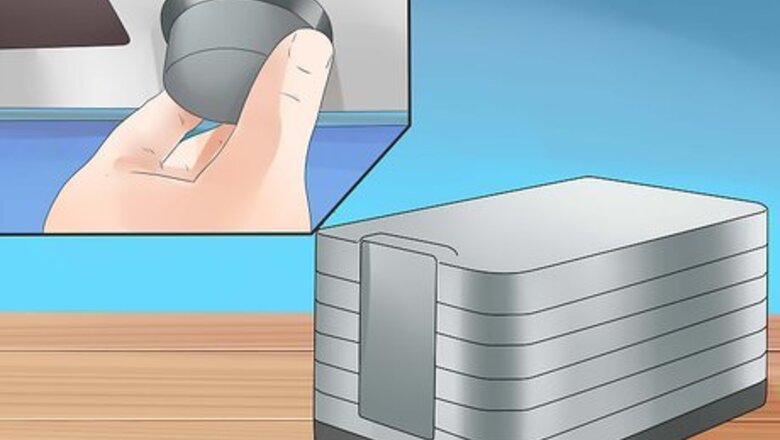
views
Using a Dehydrator
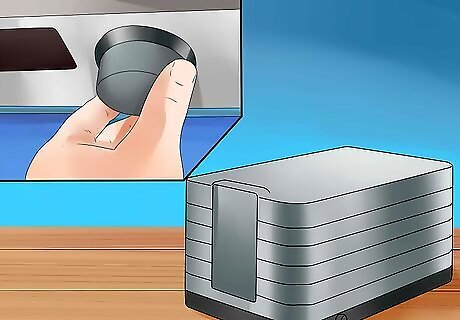
Preheat the dehydrator, if applicable. Some dehydrators have a thermostat, while others have a simple “On / Off” switch. If your dehydrator has a thermostat, set it to 135 or 140 degrees Fahrenheit (57 or 60 degrees Celsius) and let it preheat while you prepare the tomatoes. If your dehydrator only has an “On / Off” switch, you do not need to preheat it. Instead, simply turn the heat on after you add the tomatoes to the appliance. If your dehydrator does not have a thermostat, it might be a good idea to set a cooking thermometer in the bottom tray of the dehydrator so that you can monitor the temperature as the tomatoes dehydrate.
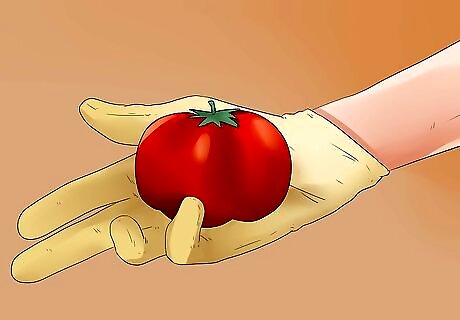
Prepare the tomatoes. The tomatoes should be washed, dried, skinned, cored, cut, and seeded. Wash the tomatoes under running water and pat dry with clean paper towels. Skin the tomatoes only if desired. Cut an "X" on the bottom of the tomato, just deep enough to slice through the skin. Blanch the tomato in boiling water for 25 to 30 seconds before removing with a slotted spoon and dunking into ice water. Peel the skin off with your fingers. Use a paring knife to cut a cone shape out of the top stem end of each tomato to remove the core. Slice off a small portion of the bottom end, as well. Cut the tomatoes into decent sizes. Cherry tomatoes should be cut in half, roma (plum) tomatoes should be cut in halves or quarters, and larger tomatoes should be cut into 1/4-inch (6.35 mm) slices. Seeding the tomatoes is optional. Scoop out the seeds with a spoon, leaving the pulp behind. You can blot away extra juice with a clean paper towel.
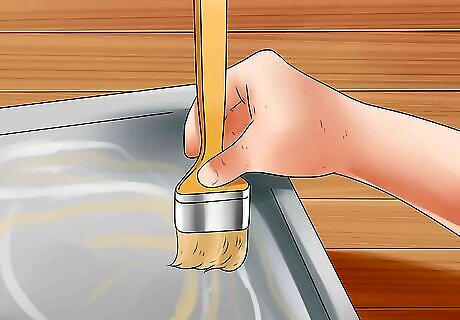
Grease the dehydrator trays. Spray the dehydrator trays with a light coating of cooking spray or rub a small amount of olive oil over the trays using another clean paper towel. Greasing the trays will prevent the tomatoes from sticking. The oil can also add flavor to the tomatoes.
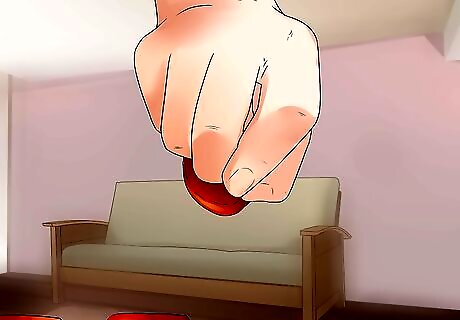
Place the tomatoes on the dehydrator trays. Arrange the tomato pieces on your prepared dehydrator trays so that they are cut-side up and roughly 1/2 inch (1.25 cm) apart from one another. Do not layer the tomatoes or position them so that they touch one another. Doing so will cause the tomatoes to dehydrate unevenly.
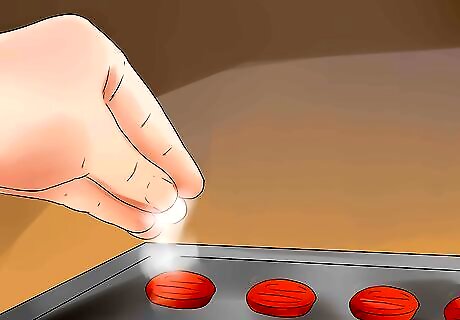
Season as desired. The simplest option would be to sprinkle the tomatoes with salt. Use as much or as little salt as desired according to your own personal tastes. You could also use a light dusting of ground black pepper, garlic powder, or onion powder, or an herb blend made with chopped herbs like oregano, parsley, and thyme. Both dried herbs and fresh herbs will work.
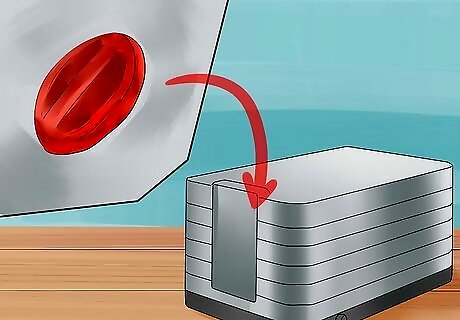
Dry the tomatoes in the dehydrator. Place the racks in the dehydrator and dry the tomatoes for 8 to 12 hours, or until the tomatoes are smaller, shriveled, and leathery, but no longer tacky. Keep roughly 1 to 2 inches (2.5 to 5 cm) of space in between the racks. Doing so will ensure that there is enough air circulation to reach all the tomatoes. Check the tomatoes every hour or so as they dehydrate. Rotate the racks if you notice that some tomatoes are drying more rapidly than others. If some pieces dry faster than others, remove them to prevent them from becoming scorched or burnt.
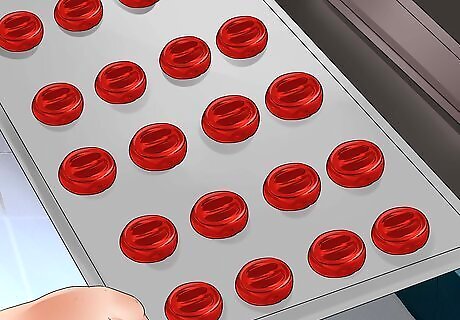
Store. Once the tomatoes are ready, remove them from the oven and let them cool completely at room temperature. Pack them in freezer bags, vacuum sealed bags, plastic containers, or jars, and store them in a cool, dark place until you are ready to use them. Usually, dehydrated tomatoes kept in cool temperatures in an airtight container will last for 6 to 9 months.
Using an Oven
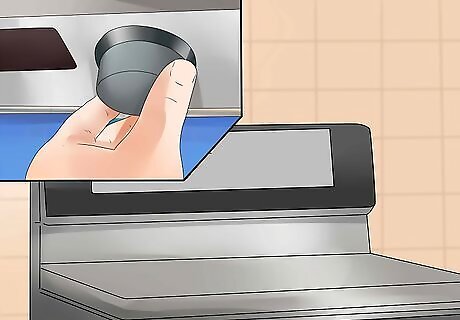
Preheat the oven. For the first part of the process, you will need to scorch the tomatoes at a temperature of 425 degrees Fahrenheit (218 degrees Celsius). Preheat the oven to that temperature first. Meanwhile, prepare two baking sheets by lining them with nonstick aluminum foil or parchment paper. You could also spray the baking sheets with nonstick cooking spray if you do not want to use foil or parchment paper, but note that foil and parchment paper will make it easier for you to clean up later on. Use a rimmed baking sheet so that the excess juices and liquid produced during the process will be contained instead of dripping off into your oven.
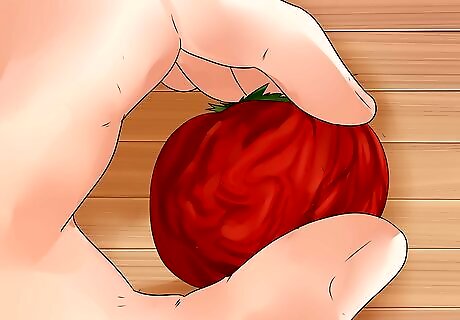
Prepare the tomatoes. The tomatoes will need to be washed, dried, cored, and cut. Removing the seeds is an option, as well. Note that you should not skin the tomatoes yet. Rinse the tomatoes under cool, running water and pat them dry with clean paper towels. Cut a cone shape out of the top stem end of each tomato to remove the core. Use a small paring knife to do so. Cut the tomatoes into decent sizes. Cherry tomatoes should be cut in half, plum or roma tomatoes should be cut into halves or quarters, and larger tomatoes should be cut into 1/4-inch (6.35 mm) slices. You can remove the seeds, if desired, but the seeds and pulp contain a lot of flavor, so many prefer to leave them in. If you decide to remove the seeds, scoop out the seeds with your finger or with a kitchen spoon and leave as much of the pulp behind as possible.
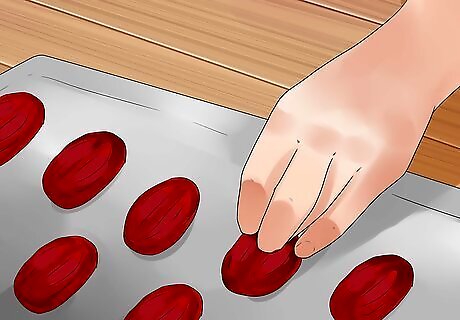
Place the tomatoes onto baking sheets. Arrange the tomatoes on your prepared baking sheet with the cut-side facing up. Position them so that each piece is about 1/2 inch (1.25 cm) apart from the others. Do not stack the tomatoes or let them touch. Doing so could result in tomatoes that do not dehydrate evenly, so some may end up drying out or burning while others remain too moist to use.
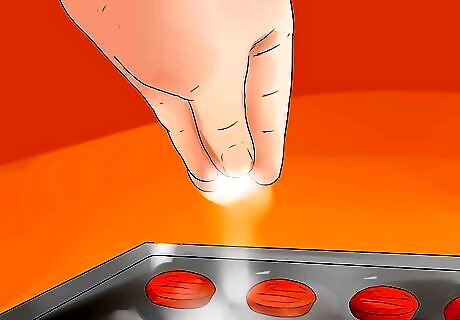
Season the tomatoes as desired. Popular seasonings for dehydrated tomatoes include salt, ground black pepper, herbs, garlic powder, and onion powder. Sprinkle the tomatoes with your seasoning of choice generously, or according to taste. If you use herbs, go for options like oregano, parsley, and thyme. Both dried herbs and fresh herbs will work. You could also scatter fresh minced or chopped garlic over the tomatoes instead of using garlic powder.

Drizzle with oil. Drizzle a fine stream of olive oil over the tomatoes, coating them evenly. This oil enhances the flavor of the tomatoes and prevents them from cooking poorly. If using store-bought olive oil in its original container, place your thumb over the spout as you pour so that you can control the speed and size of the stream more easily.
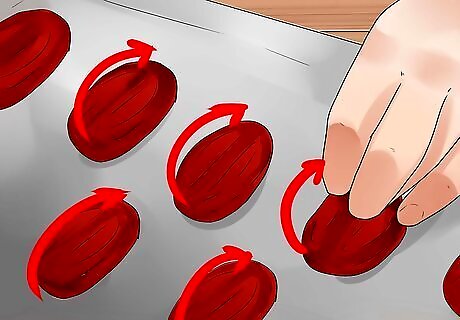
Flip the tomatoes over. Use your hands or tongs to flip the tomatoes over so that the skin-side faces up. This is important since you will be scorching the tomatoes before you dehydrate them fully. By exposing the skin side to the direct heat, you prevent the tomato pulp from becoming too burnt too quickly.
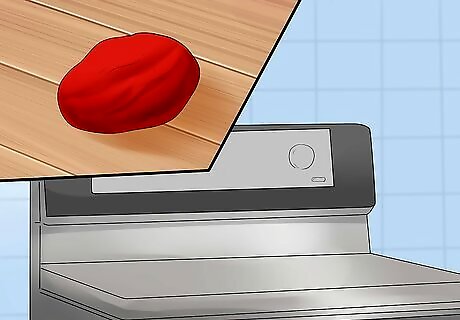
Blister the tomatoes. Place your tomatoes in the preheated oven and let them sit there for 30 minutes. When ready, the skins will show signs of some wrinkling and some browning.
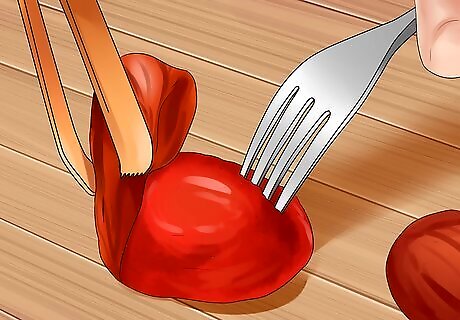
Drain and skin. Remove the tomatoes from the oven and pour off the excess liquid that has begun to leak out from the tomatoes. Remove the skins by pinching them in between tongs and peeling them off. You can drain the liquid by tilting the pan and letting it run off into a bowl, or you could also suction the liquid away using a turkey baster. As soon as you pull the tomatoes out of the oven, you should reduce the temperature to 300 degrees Fahrenheit (149 degrees Celsius). Do not finish roasting the tomatoes at 425 degrees Fahrenheit (218 degrees Celsius).
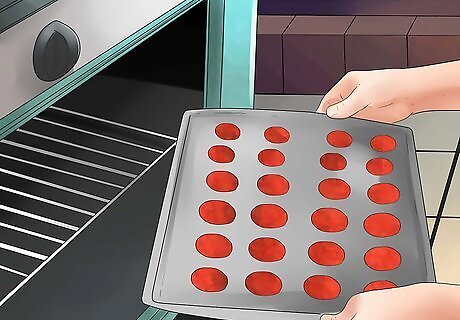
Roast the tomatoes. Return the tomatoes to the oven and cook for another 3 to 4 hours. The finished tomatoes should look visibly dry with a few dark edges. Flip the tomato pieces cut-side up after the first hour of cooking. Drain or siphon away the excess juice every 30 minutes.
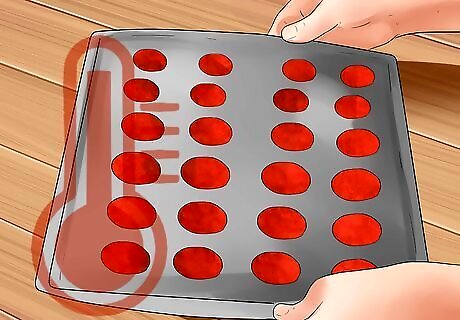
Store. Remove the tomatoes from the oven and let them cool at room temperature. When ready, you can store them in an airtight container or plastic bag, which can be frozen for up to three months. Alternatively, place the tomatoes in a bowl and cove them with extra-virgin olive oil. Wrap the entire bowl in plastic wrap and refrigerate the tomatoes for up to 2 months.
Using the Sun

Prepare the tomatoes. The tomatoes will need to be cleaned, dried, cored, cut, and seeded. Before you begin, it is important to note that tomatoes should be sun-dried only in hot weather and low humidity. You will need roughly three days to complete the process, so wait until the weather forecast shows appropriate weather for at least that long. Note that you should not remove the skins. Rinse the tomatoes under running water and pat them dry with clean paper towels. Cut a cone shape out of the stem end of each tomato to remove the core. Use a small paring knife to do so. Cut the tomatoes into two or more pieces. Cherry tomatoes should be cut in half, plum or roma tomatoes should be cut into halves or quarters, and larger tomatoes should be cut into 1/4-inch (6.35 mm) slices. You should remove the seeds for this method. Scoop out the seeds with your finger or with a kitchen spoon, leaving as much of the pulp behind as possible.
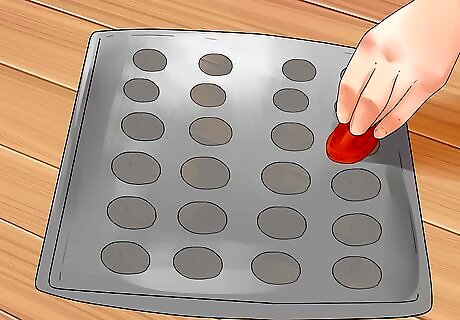
Place the tomatoes in trays. Arrange the tomatoes in trays with the cut-side facing down. Space each tomato portion about 1/2 inch (1.25 cm) away from any other piece. Do not let the tomatoes touch and do not stack them, since doing so will likely result in unevenly dried tomatoes. Use a shallow, wood-framed tray. The tray should also have nylon netting for the bottom. Do not use a tray with a solid bottom, since a solid bottom will limit the amount of air circulation the tomatoes receive and may create mold-friendly conditions.
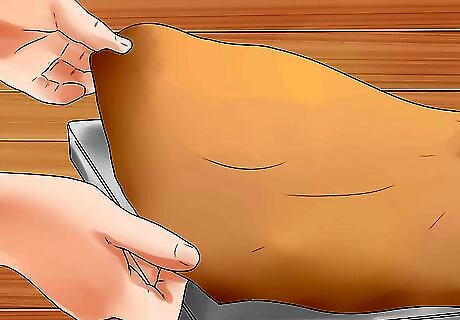
Cover the trays. Loosely lay a piece of protective netting or cheesecloth over the tray of tomatoes. This protective layer will prevent insects, garden pests, and other potential hazards from harming your tomatoes. Make sure that the protective layer is very porous and light so that enough heat and air can get through without difficulty.
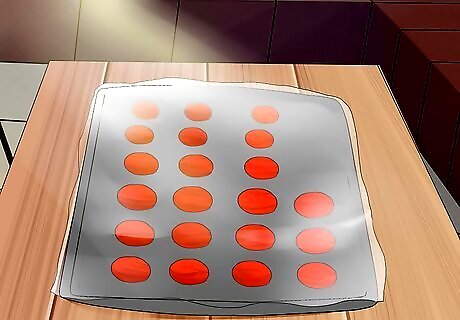
Place in direct sun. Set the tray of tomatoes in an area that receives as much direct sunlight as possible throughout the day. You should set the tray on wood or cement blocks instead of setting it directly on the ground. You need blocks or some other object that can let air circulate up from the bottom of the tray. Adequate air circulation is essential for this method.
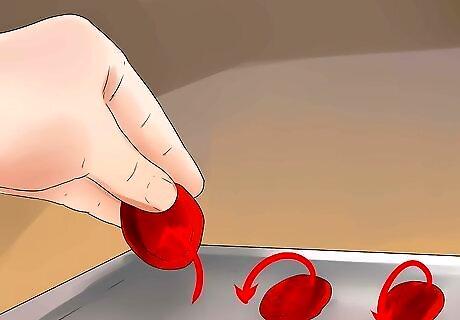
Turn as needed. The tomatoes will need to dry for about three days. After the first day and a half, turn the tomatoes over to expose the cut-side to the sunlight. The trays should be placed in a sheltered location after sundown or if the weather becomes too cold, rainy, or otherwise moist.
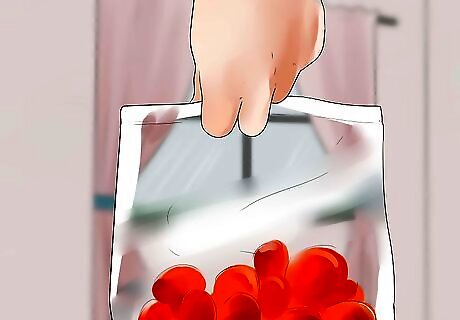
Store. When ready, the tomatoes should be dry yet pliable. Package them in airtight containers, resealable plastic bags, or vacuum bags and store for 2 to 4 months in a cool, dry, and dark area.

















Comments
0 comment